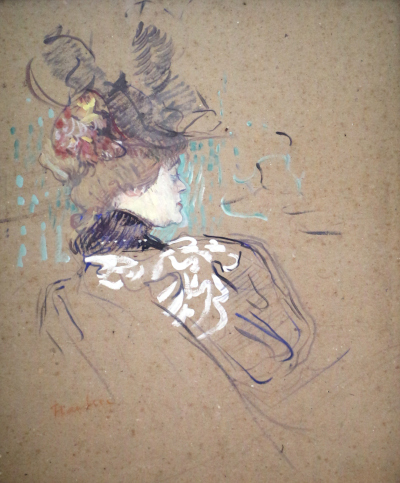This artwork displays some of the raw skills of portraiture possessed by French artist, Henri de Toulouse-Laurec. It features a female in side profile and is completed using relatively few details.
Madame Lucy is the alternative title sometimes given to this painting and it dates from 1896. Toulouse-Lautrec produced many portraits and figurative pieces within his career, and would also practice his craft with quick study pieces. The female side profile found here appears to be precisely that - where the artist lays out one part of a later piece. He does not feel the need to spend too much time on this artwork, just focusing on laying out the main forms before taking his ideas into a larger piece in which other details would be added. The artist did sign the piece in the bottom left corner, suggesting that his work here was finished, even though it could not be presented for sale, realistically. The woman's face is filled in light tones, and features of her hat are focused on. Outside of that, the composition is reduced to simple lines in black and white.
Toulouse-Lautrec was a successful illustrator and although this piece was completed in oils, we can see a connection to that, with simple lines used carefully to create genuine forms. It would leave us to imagine the rest. The angle of the woman could relate to an audience member within a cabaret show, as she looks on at proceedings. To her left we find small dots which could be other members of the audience or perhaps lights within the theatre itself. A careful study of his career could well locate the later piece for which this might have been a preparation piece, with his career fairly well documented by now. It was his cabaret scenes which have received the most interest too, and remain the most famous element of his career.
The artist became friends, even sometimes lovers, with a number of female performers, models and other women living in and around the district of Montmartre during the late 19th century. Despite his sometimes outlandish behaviour, he was entirely accepted within this part of the city, where creativity was encouraged and all manner of different characters could live without judgement. Sadly, over time, he would become too much for even his mother to deal with and he would be committed for several months. He used his art to ultimately gain freedom and continue his destructive lifestyle for several years more.




